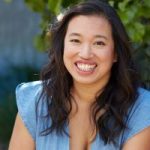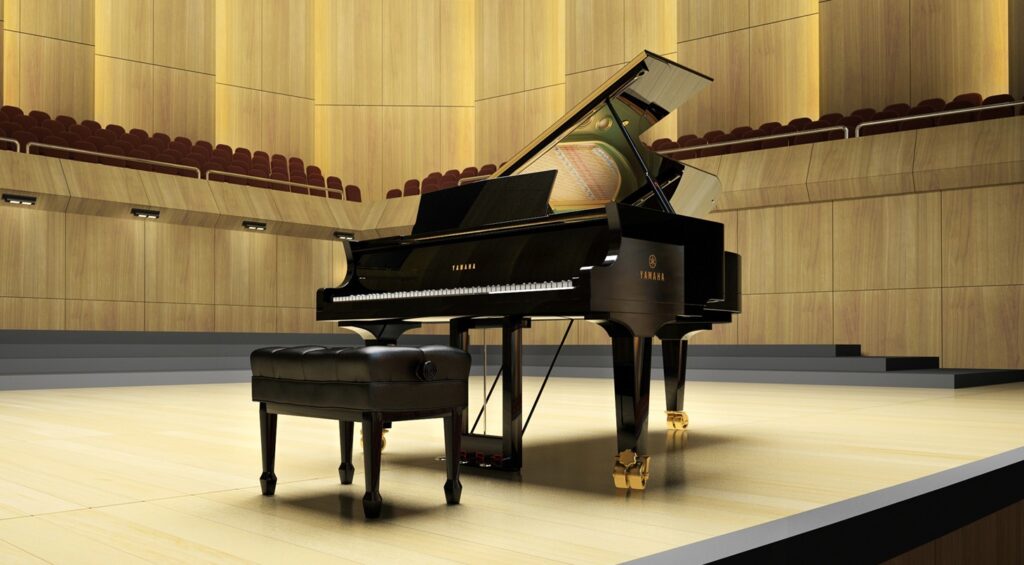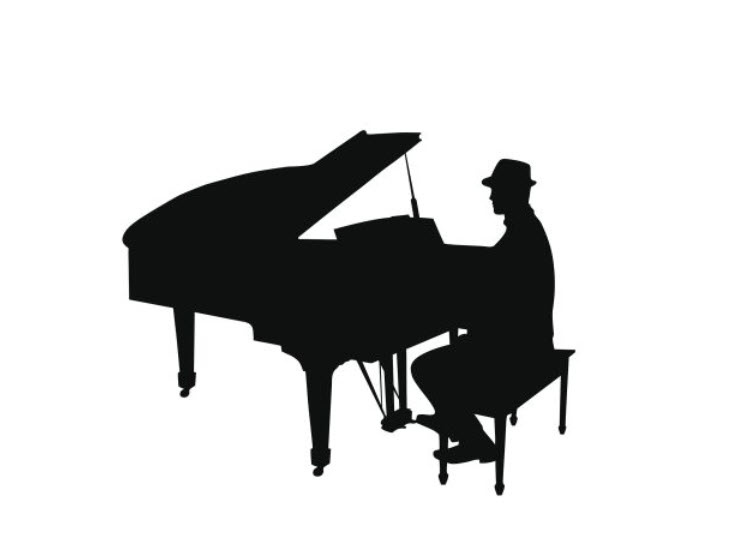Tagged Under:
Celebrating Lunar New Year Around the World
From music to feasts, learn the important traditions of the annual holiday.
Celebrated by 1.5 billion people in most Asian countries, Lunar New Year is an auspicious time. Some people call it Chinese New Year, but outside of China, it goes by different names. In Vietnam, for example, it’s Tết; in Korea, it’s Seollal.
Similarly, the customs vary by country. In Korean culture, families celebrate for three days, spending the time visiting each other and playing games together; in addition, they leave out food for their ancestors. Vietnamese people present flowers and fruits in elaborate displays in their homes and gather to burn incense at temples.
In the U.S., Lunar New Year is also celebrated widely. It’s become a statewide holiday in California, with festivals and parades in Los Angeles, San Francisco and San Jose, as well as in New York City (where it’s a public school holiday), Boston, Seattle, Philadelphia, Houston and New Orleans. In addition, annual concerts commemorating the event are staged by the New York Philharmonic as well as at the Kennedy Center in Washington, D.C., Davies Symphony Hall in San Francisco and other prestigious concert halls.
The dates for the celebration follow the lunar calendar, so they change every year. In 2025, the holiday begins on January 29 and culminates on February 14. Each Lunar New Year is matched with one of 12 Chinese zodiac animals. 2025 is the Year of the Snake — the snake being a symbol of introspection, mystery and intelligence.
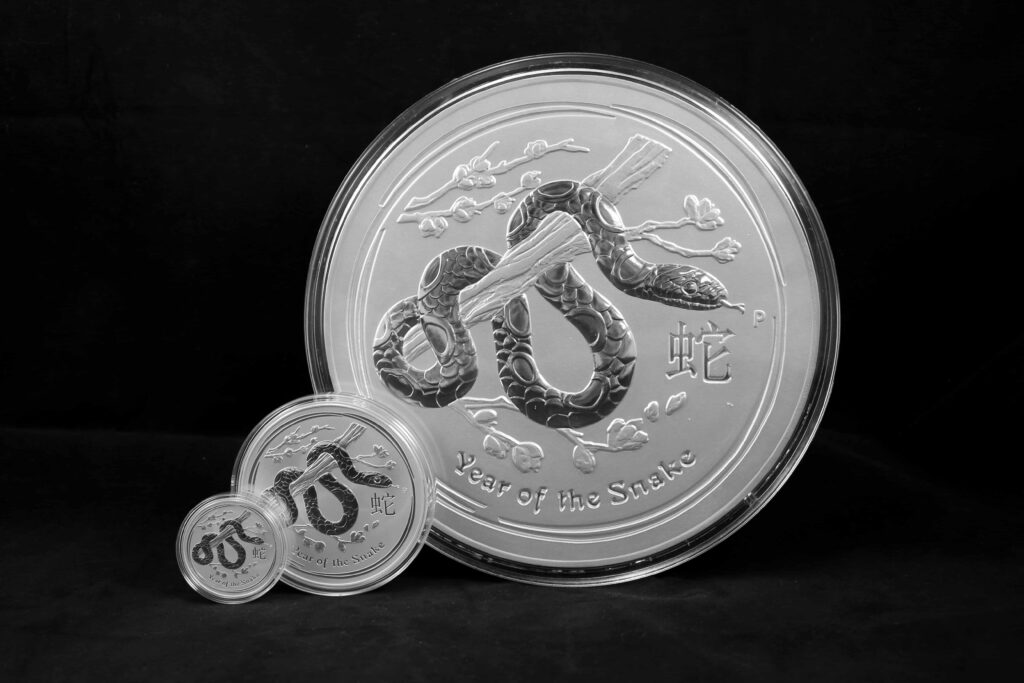
The Story Behind the Holiday
The legend behind Lunar New Year is that, thousands of years ago, the Nián monster (“Nián” is the Mandarin Chinese word for “year”) would rampage villages at the beginning of each new year, so families hid in their homes and prepared feasts as an offering to ancestors and gods, using firecrackers to scare away the monster. The color red signifies good luck and happiness, so homes are decorated with red and gold paper poems and lanterns to chase out the bad luck. In modern times, the 15-day celebration includes fireworks and red dragon costumes, which symbolically chase away the Nián monster. It kicks off on New Year’s Eve with a family feast dedicated to health, abundance and happiness.
The Music and Performances of Lunar New Year
The music associated with Lunar New Year celebrations has evolved over the centuries from humble beginnings to the performances we see today in big cities and concert halls around the world — even theme parks like Disneyland!
In Lunar New Year parades, musical instruments such as drums, gongs and cymbals are played loudly to keep the “bad luck” monster away. One Chinese traditional instrument used during those celebrations is the bo lang gu. This double-headed drum, created about 3,500 years ago, was part of religious rituals in Tibet, Mongolia, India and Taiwan. Nowadays you’ll see it sold along parade routes, and it’s often made by kids as a fun craft to make some noise. Two pellets are connected to each side of the drum and revelers hold a rod at the bottom. When the drum is twisted back and forth, the pellets strike the drum in a steady rhythm.
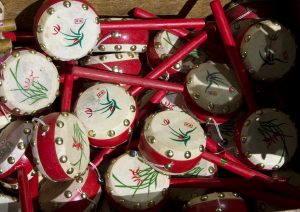
A popular Lunar New Year tradition is the lion dance, with performers donning elaborate lion costumes. Often, two people are inside, making the lion’s big eyes blink and head wag back and forth. Dancers perform a routine, sometimes jumping on each other’s shoulders to make the lion appear large.

While the lion cavorts, large double-sided drums called da gu or tong gu are struck and cymbals are played loudly to chase away bad luck. The huge drums and bamboo drumsticks (shown below) are often ornately decorated to match the lion, and the musicians wear costumes with similar colors. Usually there are eight performers (musicians and dancers in total) because the number eight sounds similar to the Chinese word for money, so eight is seen as a good number for the new year and beyond.
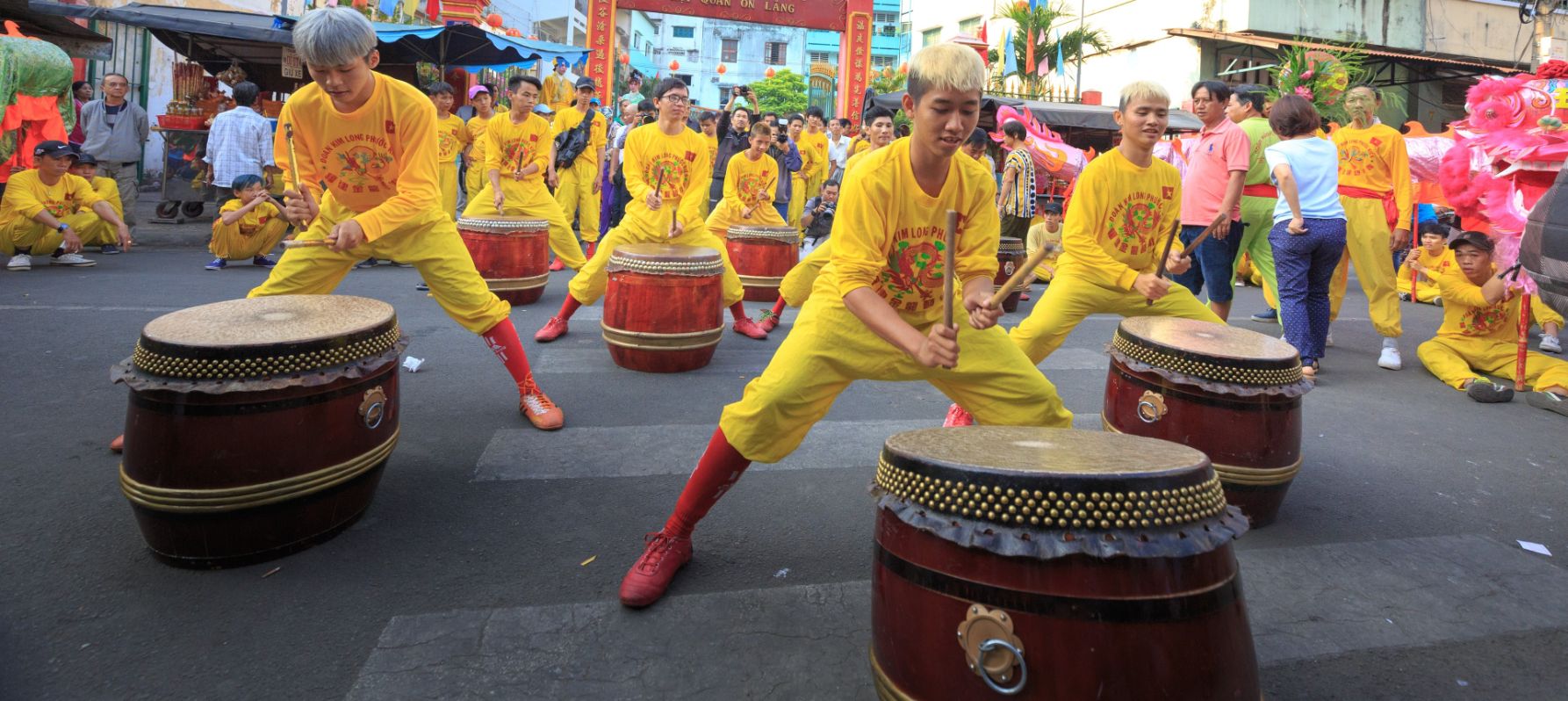
Different Asian countries play the drums differently. For example, in Malaysia, drummers create a tempo that is meant to sound like the lion’s heartbeat to make it seem more alive. Typically, people bring small red envelopes (hong bao in Mandarin Chinese) to “feed” the lion for good luck and prosperity. Elders also fill these envelopes with money to give to children as fortune for the new year. Yamaha Artist Steven Lin has fond memories of the tradition, saying that, “as a child, I remember looking forward to [Lunar New Year] because I would receive red envelopes from friends and family.”
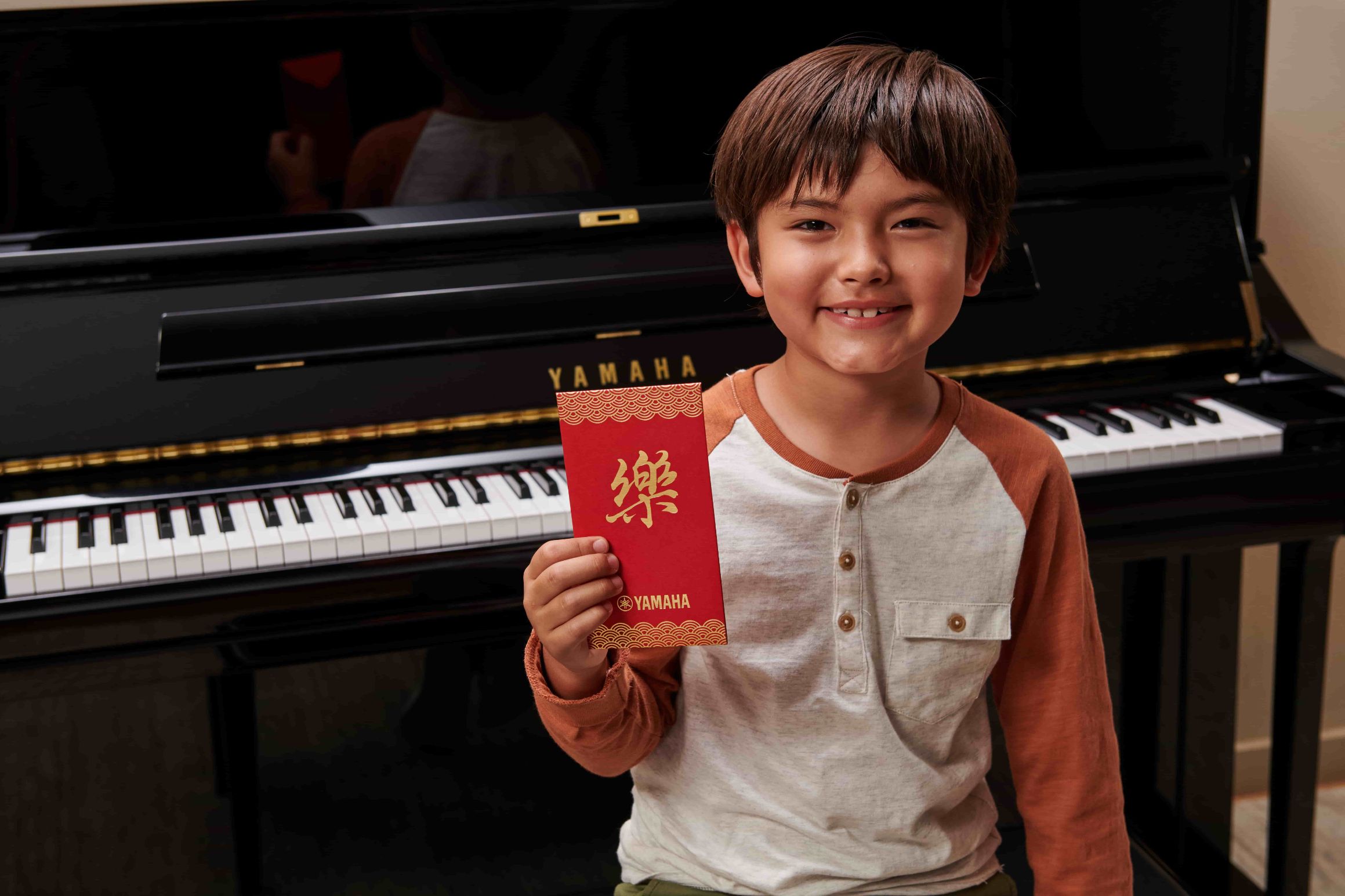
Lunar New Year festivities often feature gongs and cymbals as well. The gong (da luo) is beaten with a padded mallet. The cymbals, known as jing-bo, are played in synchronized tempo with the drums. How the cymbal is struck is paired with particular movements of the dancers. A soft single strike of one cymbal (or gently touching the edge of a rim) is used when the lion is resting. A droning sound created by sliding the cymbals together is played when the lion is sleeping. Light or heavy clashing of the cymbals is matched with bigger movements. In addition, the musician will use their chest to dampen the sound of the cymbals when it needs to be stopped. Lion dances are carefully choreographed, with musicians and dancers relying on each other in constant collaboration.
Over the years, modern Western instruments have begun playing an increasingly larger role in Lunar New Year celebrations. Pianos first arrived in China in the 19th century, and quickly became very popular. Today, piano ownership has become a status symbol, with more than 40 million Chinese children estimated to be learning the instrument.
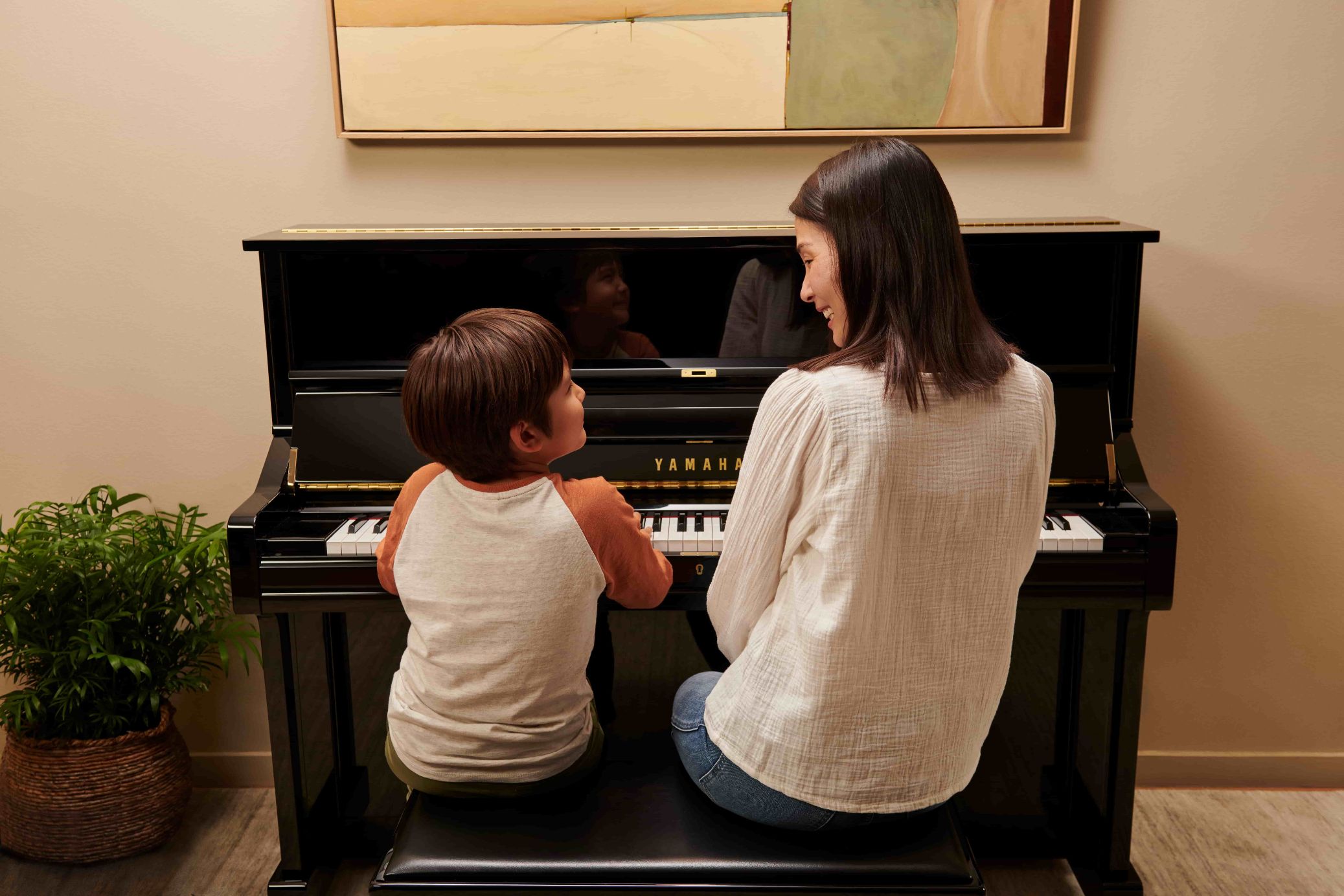
The Spring Festival Overture is a work strongly associated with the Lunar New Year (the Spring Festival of the title is the Chinese New Year), with themes that come from the folk music of the Shanbei region. It exists in various versions, some employing more traditional Chinese instruments, others using modern Western instruments, and has been performed by many prestigious symphony orchestras, including the Los Angeles Philharmonic and the New York Philharmonic. You can see and hear this piece performed on solo piano in this video.
Another traditional Lunar New Year song is Mu Ge (Pastoral Song), composed by Shan Han Kun in 1953 and based on a folk song from the northern part of China. You can watch Yamaha Artist Jessica Chow Shinn perform this piece in the video below.
The Celebration Feasts
The large meal that kicks things off on New Year’s Eve features dishes that are tied to tradition. Dumplings symbolize wealth because their shape looks similar to ancient gold coins. Dishes with long noodles as the main ingredient are eaten for a long life. Steamed fish is also consumed in abundance because the Chinese word for fish (yú) has the same pronunciation as the word for “surplus.” For dessert, nián gāo, a glutinous sweet rice cake, is said to make each year sweeter and better than the last. Mandarin oranges are also regularly given as gifts and eaten during Lunar New Year because they represent good luck and abundance.

“The New Year in my family has always been a special time to connect with loved ones and to eat delicious foods together,” says Chinn. “I grew up in Wisconsin, where my parents owned the only Asian grocery store in town, so we were well-stocked! I also had an amazing, close-knit Chinese community of aunts and uncles who took care of me and kept me enveloped in my heritage.”
In every Asian community that celebrates Lunar New Year, the hallmarks of the holiday are similar: a wish for prosperity, family togetherness and good luck in the coming year. It’s a wonderful time — a very special event that families look forward to every year.









